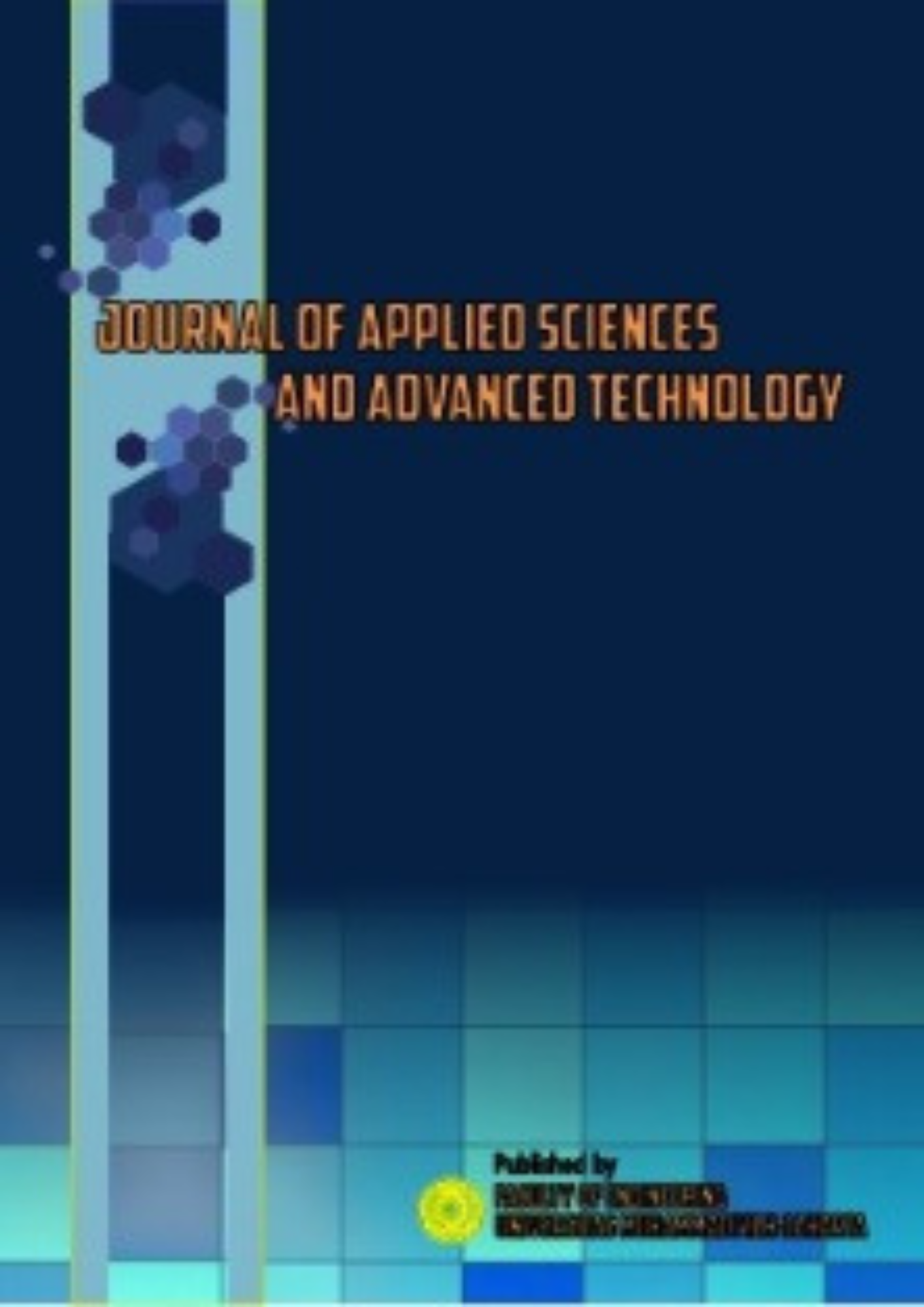Comparison of Genetic Algorithm Optimization with Support Vector Machine (SVM) for Weather Forecast
DOI:
https://doi.org/10.24853/jasat.6.3.83-90Keywords:
Optimation, Weather Forecast, LVQ, GA, SVM.Abstract
Weather forecasts are one of the important factors for daily activities. It can be used for daily work activities such as farming, aviation, production and distribution. The Meteorology, Climatology and Geophysics Agency makes weather forecasts based on weather parameters, namely temperature, air pressure, solar radiation, humidity and rainfall. The weather forecast class is divided into 5 classes, namely Cloudy, Rainy, Sunny, Cloudy Rainy and Cloudy Sunny. In this research, a comparison of weather forecast models using Learning Vector Quantization optimization and Genetic Algorithms will be made with weather forecast models using the Support Vector Machine method. The data used in this research is weather data at the Citeko Class III Climatology and Geophysics station, the data used is data from the last 3 years. Then the data is divided into training and test data using percentage split with a division of 65% used for training data and 35% used for test data. After making the model using the LVQ-GA and SVM methods, a comparison of the model test results was carried out, from the test results the accuracy value was calculated using a confusion matrix for each model. The accuracy result of the LVQ-GA optimization weather forecast model was 73%, while the weather forecast model using the SVM method obtained an accuracy value of 81.5%, thus the results from SVM were better.Downloads
References
WMO, “World Meteorological Organization.” https://public.wmo.int/en/our-mandate/weather (accessed Dec. 22, 2023).
V. Winarti, M. I. Jumarang, and A. Apriansyah, “Prakiraan Kejadian Hujan di Kota Pontianak dengan Metode JST-Logika Fuzzy,” Prism. Fis., vol. 6, no. 2, pp. 117–123.
S. Andriani and K. Subandi, “Weather Forcast Optimization Using Learning Vector Quantization Methods with Genetic Algorithms,” J. Appl. Sci. Adv. Technol., vol. 3, no. 2, pp. 45–50, 2020.
S. Kusumadewi, “Membangun Jaringan Syaraf Tiruan Menggunakan MATLAB & EXCEL LINK,” Yogyakarta Graha Ilmu, 2004.
I. Afrianto, “Perbandingan Metode Jaringan Syaraf Tiruan Backpropagation Dan Learning Vector Quantization Pada Pengenalan Wajah,” KOMPUTA J. Komput. dan Inform., vol. 1, no. 1, 2012.
A. Kustiyo, A. Buono, and N. Apriyanti, “Optimasi jaringan syaraf tiruan dengan algoritma genetika untuk peramalan curah hujan,” 2006.
F. D. Wihartiko, A. Buono, and B. P. Silalahi, “Integer programming model for optimizing bus timetable using genetic algorithm,” in IOP Conference Series: Materials Science and Engineering, 2017, vol. 166, no. 1, doi: 10.1088/1757-899X/166/1/012016.
R. Sulistiyorini and W. F. Mahmudy, “Penerapan algoritma genetika untuk permasalahan optimasi distribusi barang dua tahap,” DORO Repos. J. Mhs. PTIIK Univ. Brawijaya, vol. 5, no. 12, 2015.
R. Arniantya, B. D. Setiawan, and P. P. Adikara, “Optimasi Vektor Bobot Pada Learning Vector Quantization Menggunakan Algoritme Genetika Untuk Identifikasi Jenis Attention Deficit Hyperactivity Disorder Pada Anak,” J. Pengemb. Teknol. Inf. dan Ilmu Komput., vol. 2, no. 2, pp. 679–687, 2018.
A. A. Dwi K, “Implementasi Algoritma Genetika untuk Optimasi LVQ pada Penentuan Kelayakan Kredit (Studi Kasus: Bank X),” Universitas Brawijaya, 2018.
M. Hendry, R. M. Dayawati, and A. T. Wibowo, “Analisis dan Implementasi Optimasi Jaringan Saraf Tiruan dengan Menggunakan Algoritma Genetika untuk Pendiagnosaan Penyakit Stroke (Studi Kasus: RS. Dr. M. Djamil Padang Sumbar).” Telkom University. Retrieved from https://openlibrary. telkomuniversity. ac. id, 2009.
M. Tumini, “Prediksi Kelulusan Mahasiswa Dengan Metode Support Vector Machine (SVM) Studi Kasus STMIK Cikarang,” J. Inform. SIMANTIK, vol. 4, no. 2, pp. 50–61, 2019.
V. Jakkula, “Tutorial on support vector machine (svm),” Sch. EECS, Washingt. State Univ., vol. 37, no. 2.5, p. 3, 2006.
M. B. Nuraedah and A. A. Kasim, “Quadratic support vector machine for the bomba traditional textile motif classification,” Indones. J. Electr. Eng. Comput. Sci, vol. 11, no. 3, pp. 1004–1014, 2018.
J. Han, M. Kamber, and J. Pei, Data Mining: Concepts and Techniques. 2016.
B. Kusumoputro, “Pengembangan Sistem Pengenalan Wajah Secara 3 Dimensi Menggunakan Hemisphere Structure of Neural Networks dan Optimasi Struktur Menggunakan Algoritma Genetika,” 2004.
S. Puri and S. P. Singh, An Efficient Hindi Text Classification Model Using SVM, no. March 2021. Springer Singapore, 2019.
L. G. Irham, A. Adiwijaya, and U. N. Wisesty, “Klasifikasi Berita Bahasa Indonesia Menggunakan Mutual Information dan Support Vector Machine,” J. Media Inform. Budidarma, vol. 3, no. 4, p. 284, 2019, doi: 10.30865/mib.v3i4.1410.
X. Yan and M. Jia, “A novel optimized SVM classification algorithm with multi-domain feature and its application to fault diagnosis of rolling bearing,” Neurocomputing, vol. 313, pp. 47–64, 2018, doi: 10.1016/j.neucom.2018.05.002.
Sudianto, A.D. Sripamuji, I. Ramadhanti, et.al. “PENERAPAN ALGORITMA SUPPORT VECTOR MACHINE DAN MULTI-LAYER PERCEPTRON PADA KLASIFIKASI TOPIK BERITA” Jurnal Nasional Pendidikan Teknik Informatika: JANAPATI, Volume 11, Nomor 2, Juli 2022.
Downloads
Published
Issue
Section
License
COPYRIGHT POLICY
The author(s) of an article published in the Journal of Applied Sciences and Advanced Technology (JASAT) retains ownership of the intellectual property rights in work (s).
PUBLISHING RIGHTS
The author(s) of an article published in the Journal of Applied Sciences and Advanced Technology (JASAT) have unrestricted publication rights. The authors give the Journal of Applied Sciences and Advanced Technology (JASAT) the right to publish the article and designate the Faculty of Engineering Universitas Muhammadiyah Jakarta Publishing as the original publisher of the article.
LICENSING POLICY
JASAT is an open-access journal that follows the Creative Commons Non-Commercial 4.0 International License (CC BY-NC 4.0), which states that:

Under this license, the reusers must give appropriate credit, provide a link to the license, and indicate if changes were made. Users may do so in any reasonable manner, but not in any way that suggests the licensor endorses users or their use.
Please take the time to read the whole license agreement (https://creativecommons.org/licenses/by-nc/4.0/). As long as reusers follow the license conditions, the owner cannot withdraw these freedoms. The following components are included under this license:
 Attribution: Users must provide appropriate attribution, including a link to the license, and indicate whether or not they made any modifications. Users are free to do so reasonably, but not in a manner that indicates the licensee approves of their usage.
Attribution: Users must provide appropriate attribution, including a link to the license, and indicate whether or not they made any modifications. Users are free to do so reasonably, but not in a manner that indicates the licensee approves of their usage.
 NonCommercial: Users may not use the material for commercial purposes.
NonCommercial: Users may not use the material for commercial purposes.












_2.png)


1.png)

2.png)
